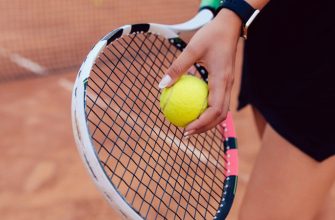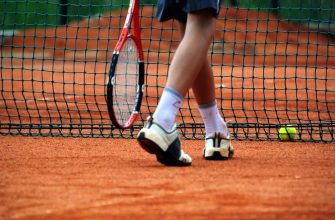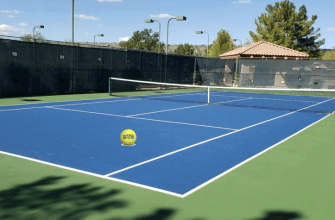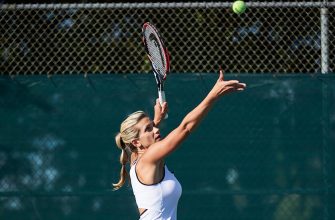A volley is a tennis technique that involves hitting the ball before it bounces on the ground. It necessitates quick reflexes and accurate timing. Players stand close to the net and use a compact swing to return the ball. It’s great for responding to low or weak shots.
For a successful volley, footwork is vital. Be balanced with your knees slightly bent for efficient movement. Grip the racket firmly, but not too tightly. Different to groundstrokes, power is not generated from body rotation – it’s all about finesse and accuracy. Make contact with the ball in front of your body and aim it back into play. Exceptional hand-eye coordination and anticipation are key.
Regular practice is necessary to excel at volleys. Repetition and experience will help develop proficiency. Work on technique, positioning, and anticipation. In 2003, Roger Federer showcased his impeccable volleying skills. His lightning-fast reflexes and timing allowed him to intercept Philippoussis’ powerful shots and win the Wimbledon final.
To up your game, you must understand what a volley is in tennis. Master this shot for control at the net and an impressive display of finesse and accuracy. Next time you hit the court, remember the importance of mastering the volley.
Explaining the Concept of a Volley in Tennis

A volley is a tricky tennis move. Quick reflexes and good hand-eye coordination are needed. The goal is to hit the ball fast, so your opponent can’t get ready for a powerful shot.
For volleys, players generally use short backswings. This allows them to hit the ball closer to the other side of the court. It can be a forehand or backhand shot.
Volleys let the player take control of the point. They need anticipation and fast footwork to make the most of each opportunity. Volleys are very useful in doubles matches, as they can take advantage of weaknesses in the other team’s court positioning.
Pro Tip: To improve your volleying, make sure your wrist is firm and use short movements to hit the ball. Practice your footwork too, to make sure you’re in the best spot for making volleys.
Significance of Mastering the Volley Technique

The volley technique is vital for tennis players. It helps them to react quickly to shots at the net. Doing volleys with precision can make a difference in winning points.
To be good at volleys, players must focus on developing certain key aspects. Footwork is important. Reactions must be quick. Movement must be agile. Hand-eye coordination also matters, to judge the speed and trajectory of the shot.
Racket control is another factor. Players must make sure they have a firm grip. This will give them stability and better control over the shot’s direction and power. Good posture and balance are also essential. This will help with consistency.
Practice sessions are important. Drills should be done to target volleys. For example, practicing volleys against a wall or with a partner. Shadow swings can help too, without hitting the ball. Just focus on form and technique.
Watching professional tennis matches can be useful. Pay attention to footwork, racket control, and overall technique. This can teach you the nuances of mastering the volley skill.
Step-by-step Instructions on How to Perform a Volley in Tennis

To master the art of volleying, you need good technique and quick reflexes. Here’s a guide to help you get started:
- Position yourself correctly. Stand near the net with knees bent and weight on your toes. Keep your racket up and ready to swing.
- Anticipate the shot. Observe your opponent to guess where the ball is heading. This will help you move quickly and be in position.
- Make a short swing. As the ball comes, hit it in front of you with a small, controlled swing. Don’t hit too hard.
- Follow through. After you make contact with the ball, keep your racket moving forward and parallel to the net. This follow-through motion helps control the direction and placement of your shot.
More tips:
- Keep your eye on the ball
- Have soft hands
- Practice with a partner or against a wall to improve your reflexes
- Plus, footwork is key; move lightly and adjust quickly to receive shots near the net.
Take inspiration from Martina Navratilova, who was an ace at volleying. She put in many hours of practice and became one of the world’s best tennis players. Her volleys amazed her opponents and motivated a new generation to work on their net game. She won 18 Grand Slam singles titles and countless doubles titles.
Practice Drills

Tennis players can take their game to the next level by engaging in drills that focus on volleys.
Such drills include:
- The Two-Handed Volley Drill
- The Moving Target Drill
- The Wall Volley Drill
- The Footwork Drill
- The Shadow Swing Drill
To reap the full benefits of these drills, it’s important to practice consistently and with proper technique. Once you incorporate them into your training, you’ll see a clear improvement in your volley skills!
Don’t miss out on the chance to better your game; take advantage of these practice drills and watch as your performance on the court soars!
Common Mistakes to Avoid
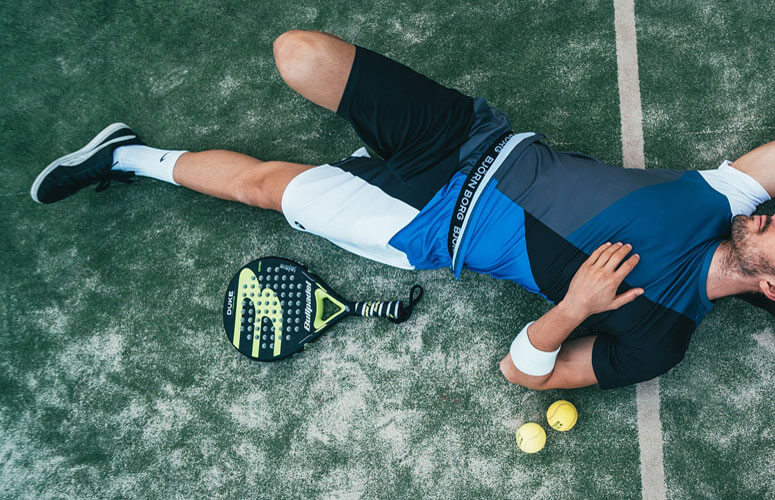
Want to ace your volley game in tennis?
There are three essential points to keep in mind:
- Positioning: Stand just inside the service line for better control and maneuverability.
- Racquet Prep: Make sure to bring your racquet back early. Keep it at a ready position.
- Follow-through: Complete your swing even after making contact with the ball.
Plus, stay light on your feet for successful volleys. Adjust promptly during each shot to gain an advantage over your opponent.
For inspiration, take Sara’s story. She struggled with volleys but found success through practice. With determination, she improved her technique and won her tournament match.
Mastering volleys is key. Avoid common errors to get a competitive edge!
Strategy and Applications

Volley technique in tennis is a great way to improve your game. By including volleys, you can take advantage of openings and surprise your rival. Executed right, volleys can be quick and powerful at the net, putting strain on the competitor and increasing your chances of winning.
To use volleys, you need to consider several things. Firstly, positioning on the court is important. You should aim to be near the net when you can, as it gives you fast reaction time and control over your shot. Plus, good footwork and balance are essential for successful volleys.
Timing is also key. You must anticipate when volleys will come up and react swiftly. This needs constant attention to the court.
If you’re playing doubles, communication with your partner is vital. Coordination and teamwork can lead to successful volley exchanges, which adds extra pressure to the other team.
Remember: Consistent practice is the key for successful volley strategy. Work on precision and control of your shots at the net!
Frequently Asked Questions
Q: What is a volley in tennis?
A: In tennis, a volley is a shot in which the player hits the ball before it bounces on their side of the court. The player usually moves towards the net to hit the ball in mid-air.
Q: When should I use a volley in tennis?
A: Volleys are typically used in tennis when the opponent hits a shot that lands near the net. Instead of letting the ball bounce and potentially giving the opponent an advantage, a volley allows you to hit the ball in mid-air, returning it with precision and speed.
Q: What are the different types of volleys in tennis?
A: There are two main types of volleys in tennis – the forehand volley and the backhand volley. The forehand volley is executed with the dominant hand’s palm facing forward, and the backhand volley is done with the non-dominant hand’s palm facing forward.
Q: How can I improve my volley in tennis?
A: To improve your volley, practice footwork and positioning near the net. Work on your reaction time and hand-eye coordination to be ready for incoming volleys. Regular volley-specific drills and practice matches can also help improve your technique.
Q: Can volleys be used for both offensive and defensive purposes?
A: Yes, volleys can be used for both offensive and defensive purposes in tennis. They allow you to take control of the point by hitting winners near the net, or defensively, by blocking and redirecting powerful shots from your opponent.
Q: Are volleys only used in doubles matches?
A: No, volleys are used in both singles and doubles matches. While volleys are typically more common in doubles due to the increased presence at the net, they are also important in singles matches, especially when approaching the net for an aggressive play.
Conclusion
Mastering volleys is a must for good tennis. It lets you take control of the point and put pressure on your opponent. You can exploit weaknesses in their game and keep them from gaining momentum. Plus, it makes you more agile and helps your hand-eye coordination.
To get better at volleys, practice often with different partners. Focus on volley techniques and footwork to build muscle memory. Also, watch pro players who are good at volleys and observe their grips, timing, and positioning.



